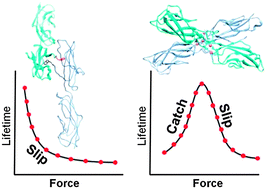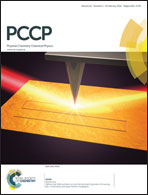Biomechanics of cell adhesion: how force regulates the lifetime of adhesive bonds at the single molecule level
Abstract
Cell adhesion proteins play critical roles in positioning cells during development, segregating cells into distinct tissue compartments and in maintaining tissue integrity. The principle function of these proteins is to bind cells together and resist mechanical force. Adhesive proteins also enable migrating cells to adhere and roll on surfaces even in the presence of shear forces exerted by fluid flow. Recently, several experimental and theoretical studies have provided quantitative insights into the physical mechanisms by which adhesion proteins modulate their unbinding kinetics in response to tensile force. This perspective reviews these biophysical investigations. We focus on single molecule studies of cadherins, selectins, integrins, the von Willebrand factor and FimH adhesion proteins; the effect of mechanical force on the lifetime of these interactions has been extensively characterized. We review both theoretical models and experimental investigations and discuss future directions in this exciting area of research.


 Please wait while we load your content...
Please wait while we load your content...